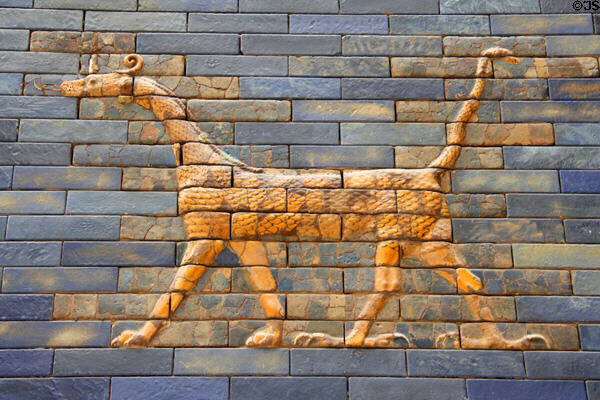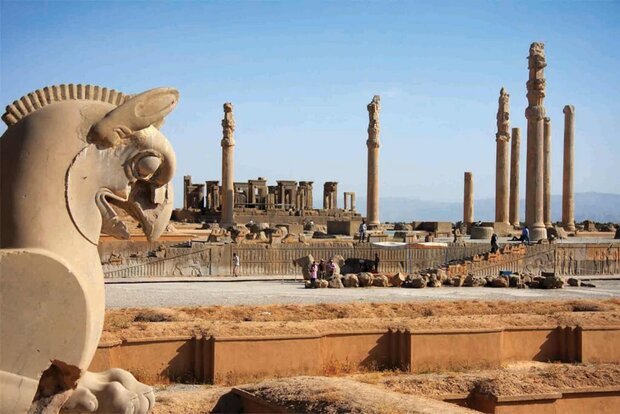Persepolis excavation yields glazed bricks bearing bull and dragon motifs

TEHRAN – A team of Iranian and Italian archaeologists has recently unearthed some glazed bricks, which bear bull and dragon motifs.
The discovery was made near the ruins of a majestic gateway, which is situated adjacent to the UNESCO-registered Persepolis in southern Iran.
The glazed bricks bear motifs of bulls and mushhushshu-dragons, the latter is a mythical creature once popular in ancient Mesopotamia, IRNA reported on Tuesday.
Named Tall-e Ajori, the gateway is made of brick and clay material with its whole exterior decorated with painted bricks.
Narratives say that mushkhushshu is a mythological hybrid animal with hind legs resembling the talons of an eagle, lion-like forelimbs, a long neck and tail, a horned head, a snake-like tongue, and a crest.
The Mushkhushshu most famously appears on the reconstructed Ishtar Gate of the city of Babylon, dating to the sixth century BC. In ancient Babylon, mushhushshu (pronounced “moosh-hoosh-shoo”) was a divine creature associated with Marduk, the main god of the city.
Covering 13-ha majestic approaches, monumental stairways, throne rooms (Apadana), reception rooms, and dependencies, Persepolis is classified among the world’s greatest archaeological sites.

A view of the UNESCO- registered Persepolis in southern Iran
Persepolis was the seat of the government of the Achaemenid Empire, though it was designed primarily to be a showplace and spectacular center for the receptions and festivals of the kings and their empire. It was burnt by Alexander the Great in 330 BC apparently as revenge to the Persians because it seems the Persian King Xerxes had burnt the Greek City of Athens around 150 years earlier.
The city’s immense terrace was begun about 518 BC by Darius the Great, the Achaemenid Empire’s king. On this terrace, successive kings erected a series of architecturally stunning palatial buildings, among them the massive Apadana palace and the Throne Hall (“Hundred-Column Hall”).
The site is marked by a large terrace with its east side abutting the Kuh-e Rahmat (“Mount of Mercy”). The other three sides are formed by a retaining wall, varying in height with the slope of the ground from 13 to 41 feet (4 to 12 meters); on the west side, a magnificent double stair in two flights of 111 short stone steps leads to the top. On the terrace are the ruins of several colossal buildings, all constructed of a dark gray stone (often polished to a marble-like surface) from the adjacent mountain.
According to Britannica, the stone was cut with the utmost precision into blocks of great size, which were laid without mortar; many of them are still in place. Especially striking are the huge columns, 13 of which still stand in the audience hall of Darius I (the Great; reigned 522–486 BC), known as the Apadana, the name given to a similar hall built by Darius at Susa. There are two more columns still standing in the entrance hall of the Gate of Xerxes, and a third has been assembled there from its broken pieces.
In 1933 two sets of gold and silver plates recording in the three forms of cuneiform—ancient Persian, Elamite, and Babylonian—the boundaries of the Persian empire were discovered in the foundations of Darius’s hall of audience. Several inscriptions, cut in stone, of Darius I, Xerxes I, and Artaxerxes III indicate to which monarch the various buildings were attributed.
Greek and Roman historians described how Achaemenid buildings were covered in spectacular amounts of gold. Persepolis alone is said to have contained 2,500 tonnes of it. Herodotus wrote that Achaemenid soldiers ‘glittered all over with gold, vast quantities of which they wore about their person’.
AFM

Leave a Comment